The Internal Comms Podcast

Episode 67 – The ABC of research: Ask, believe, change
In this episode of The Internal Comms Podcast, host Katie Macaulay invites qualitative research expert Mari Lee to sit in the hot seat. Mari’s specialism is in ‘development communication’ – using comms tools and techniques to facilitate social change.
Mari founded Devcom – a communications consultancy driven by the influence that it can have on individuals’ lives – in 2005, and has spent her life’s work enacting developmental change, from the boardroom to the borders of countries.
Mari began her career in change communication in South Africa, where she joined the team working on the region’s first national HIV AIDS campaign: Khomanani. Learning from some of the time’s most influential ‘legends’ of the development communication industry, Mari realised the value of understanding human behaviour when trying to mobilise a change programme.
This episode is a masterclass in the power and practice of research. We get invaluable insight into why qualitative research can be transformative for any business, discover how closing the feedback loop can leave your colleagues feeling empowered to inspire change, and get to know the ABC of research: Ask, believe, change.
If you have any thoughts or comments on this episode, share them using the hashtag #TheICPodcast. And make sure you’re following us @abthinks. If you’re not yet a subscriber, be sure to hit the subscribe button today!
Transcript
Katie 00:03
This episode of The internal Comms Podcast is brought to you by AB’s Acid Test audit. Now, the most impressive comms professionals I know have great instincts, but they also know intuition only gets you so far. To be truly effective, you need a plan that’s built on robust research and data. Now, in my experience, too many audit and research projects deteriorate into tick-box exercises. They can often be tedious for participants – and for comms teams, well, they often generate more questions than answers. Acid Test is the opposite. For nearly 20 years organisations have been using Acid Test to gather rich, actionable insights and intelligence on how their people are thinking and feeling. What are the priorities of your C-suite? What does success look like for your organisation? How can line managers be better supported? And what really matters most to your employees? Acid Test is qualitative research conducted in confidential one-on-one interviews with a diverse cross-section of your workforce. Now, these interviews are conducted in a very specific order, starting with the C-suite, because we are also looking for alignment, misalignment and communication gaps. Each question is carefully calibrated to uncover precisely what you need to know. And, of course, our consultants ensure the method is a message, leaving participants feeling heard and understood. So, to find out more, visit abcomm.co.uk/acidtest, download a PDF to discuss with your team and arrange an informal chat to discuss Acid Test with me and my AB colleagues. That website address again: abcomm.co.uk/acidtest.
Welcome to The Internal Comms Podcast with me, Katie Macaulay. In this show, we explore how to improve the way we communicate at work. How do we best inform, motivate and involve employees? How do we shift from broadcasting messages at people and instead engage them in a meaningful, genuine and productive dialogue?
My guest today is Mari Lee. Now, I was fortunate enough to hear Mari speak at this year’s IABC World Conference in New York. And within minutes of her presentation starting I immediately knew I wanted to invite her to sit in my podcast hot seat. Here was an authority on qualitative research, someone taking the power of asking carefully crafted questions to a totally different level. Mari’s specialism is in development communication. In other words, using comms tools and techniques to facilitate social change. And, indeed, we start by talking about her work fighting the AIDS epidemic in South Africa. Today, Mari uses the power of communication to positively influence change in individuals, companies and communities. She holds a Master’s degree in Communication Management and is a globally accredited business communicator (ABC). Mari founded the communication consultancy Devcom in 2005. She says “Devcom is passionately and authentically South African, comfortable in the most rural areas of the country, as well as the most sophisticated boardrooms, working every day to bridge the communication gap.” Listeners, this is a masterclass in the power and practice of research – particularly qualitative research. Mari’s insight, her experience and wisdom really does shine through in literally every question I asked her. So, without further ado, it is my great pleasure to bring you Mari Lee.
So, Mari, welcome to The Internal Comms Podcast. I’m very excited to have you here.
Mari 04:59
Thank you very much. It’s a great opportunity. And I’m very, very happy to be with you today.
Katie 05:05
I’d like to start by taking you back to the late 1990s and talk about the influence that mentors had on your approach to communications. So, can you tell us a little bit about the role that you played in helping to combat the AIDS epidemic in South Africa? And the impact of that experience?
Mari 05:25
Wow. Yes. So, I was very fortunate to, while I was a student, doing filing, reading about development communication from the World Bank newsletter, and got to study exactly that. And my very first job was an Honours degree, thinking I was very, very clever (you know, hire a teenager now while they know everything) was I was working on the first national HIV AIDS campaign, Khomanani, in South Africa. And it was in the era where our president said that AIDS is not caused by HIV. And we had, famously, a House Minister who advocated for managing HIV and AIDS with beetroot and garlic and diet. So, I worked with absolute fantastic mentors in that phase of my career that pushed me, but also showed me the value of research.
Dr. Harry Dagmar, Sue Goldstein, Sol Johnson – all legends in the development communication industry in South Africa and globally, for that matter – really were groundbreakers in understanding the role of human behaviour in the pandemic that we had.
I was the head of the social mobilisation campaign, and I literally left my home every Saturday or Sunday or Monday, went into a rural area somewhere in South Africa and helped what we call hotless style or circle-style focus groups with community leaders, and really listened to the solutions that they had on the ground, and then came back and presented those information to be integrated into our above-the-line advertising campaign. And just how I was exposed to the full process and how my mentors didn’t keep me out of any part of the process was so valuable. I cried frequently. And I had a great mom who said: “Here’s a cup of tea. Tomorrow, you try again.” And, you know, just learned so much about the value of human behaviour, the value of local knowledge, and the value of narrative in changing behaviour. And, as you would know, South Africa went on a 10-year journey and really declined our HIV infection rates, new infection rates. And it was because of the work that we did not only through communication, campaigning, but through real behaviour change programmes like Khomanani on the ground. And I got that experience in the real beginning of my career, which I’m very, very grateful for. It set me up to really be a lover of qualitative and narrative.
Katie 08:45
I’ve just got one follow-up question for you on that, because it sounds absolutely fascinating. And I can see how that approach aligns so neatly with the work that you went on to do. When you went into these rural local communities and sat in this circle with community leaders, did they naturally want to talk to you or did you have to position yourself and the work that you were doing in a certain way, so that they would trust and open up to you?
Mari 09:15
Absolutely. A critical question. I think that being an African, a South African, we often take our exposure to intercultural communication for granted. So, I grew up speaking limited, but speaking some of the native languages and understanding some of the late native languages, and you definitely always have to act very respectful of culture. So, in most of those circles, women aren’t really welcomed unless you are invited. And you frequently, you take off your shoes, you adhere to their cultural practices and you ask for teaching. You know, the moment you ask to say, “What are the rules of this kraal? What are the rules of this place?” and you follow on that local knowledge and you say, “Teach me.” And you come there as a learner first and then someone who has some knowledge to contribute to the circle, that really just opens up. And I think it’s a lot about your intention and who you are. You know, subsequently, I’ve worked in many African countries where I don’t speak the language, but there is a language of heart. There’s a language of body language, there is a, there’s an intentional language that we can listen to, and that you give out. And I think that there were very few circumstances where you couldn’t, through dialogue and translation and openness, broach the subjects, and to do so culturally and respectfully. To say, “I know that in your culture, it’s probably not OK to speak about sex, but I have to understand certain things. How do we do this so that we’re all comfortable about it?” and not just leave the elephant in the room. You know, I think that’s one of the key lessons I learned is to ask, and to then listen and believe. You know, if people tell you something, to actually probe respectfully or just believe it. When Black Lives Matter happened Brené Brown brought out such a powerful podcast where she said that we can’t take our worldview off. We can’t take our lens, our worldview off. So if somebody else tells you what it’s like from their vantage point, empathy is not the way to go. To say, “I know what you feel like.” The way to go is to believe you for your experience. And that’s something that I find quite often in my corporate work is that I have to tell the executives that “Your vantage point has no value here. You have to believe the vantage points or the point of view of the people who are telling you – your customers or your employees – who are telling you something. Whether you agree or disagree, whether it fits into your worldview, or your frame of reference, whether it’s accurate or not, becomes irrelevant, actually.”
Katie 12:45
Mari, there is a wealth of advice and wisdom in that answer, and my head is buzzing with another 90 questions. I’m not going to get through them all in this podcast. I’m already knowing I’m going to have to invite you back. I’m going to fast forward to today and I know that you’ve conducted more than 220 research studies over the last 17 years. And this has given you a wealth of insight into the way organisations are communicating today. It’s impossible to share all of that wealth of knowledge and analysis with us, but can you tell us a little bit about what it’s telling us in terms of particularly internal comms channels and messaging? Because I think that’s going to be particularly pertinent to our listeners.
Mari 13:30
Absolutely. About half of those studies were in a corporate communication environment, the other half in a stakeholder engagement or a developmental setting. What’s fascinating to me is that when communicators or executives want to get a message out, and they see that the message isn’t landing, they don’t go and ask why. They just add more channels. They just shout louder. Right? So, I did my Master’s study on internal communication. And what I actually did was, I took all the gold qual, silver qual, regional qual and prism, our local PRISA, our local PR bodies, award-winning internal communication case studies, and I compared them with communication theory. Now, the communication theory tells us that we need to have asymmetrical or dialogical communication. So, I took what we as industry reward. We say, “Well done, you’re on the right track, you’re a best practice example, here’s an award for you.” And I compared those 10 years of case studies with the theory. What I found was that only 9% of those case studies had feedback loops in them. And that’s very concurrent with the analysis I did on all the internal communication audits that we’ve done, where we found that for every 10 broadcasting channels, there is one listening channel. So, we are very clearly out of whack in terms of how we were naturally made with two ears and one mouth. And I find it very interesting that we as communicators and as organisational leaders have this urge to say what we want to say, rather than to understand first what it is that the audience want to hear. And then find a fusion between what we want to say what the audience need, and communicate. And, you know, the definition of communication is shared understanding, shared meaning. And I think that we still struggle with it. And I think digital communication, I’m sorry to say, has added to that woe, because now, you know, everybody is a producer, everybody can easily just broadcast. And, as communication professionals and as leaders, we can’t be broadcasters, we have to be meaningful communicators, and that must place the emphasis on listening.
Katie 16:23
You must ruminate on the barriers, the obstacles, the challenges to creating that genuine conversation where there’s genuine listening and opportunity for feedback loops and so on. What do you think are some of the biggest barriers and obstacles to that? Is it intention? Is it technology? You’ve mentioned social media makes the world so noisy, but I’m wondering if it really does come back to intention at the end of the day and a genuine- do leaders have a genuine desire to create shared meaning? Or is communication too often a tick-box exercise?
Mari 17:04
100% correct. I think often. And I don’t just see this an our- and, you know, we get to work in multidisciplinary teams in organisations, you know, and I see it in the human resources space, how compliance drives employee relationships. I see it in individual professionalism and work ethic. I think the biggest mistake we’ve made in internal communication is to make organisations responsible for engagement instead of making it a requirement of professional work ethic for each individual. If we don’t see two sides of the coin, I think, if you don’t know that you need to be a sender of information and a receiver of information and that responsibility shifts as you have a conversation. Imagine if this podcast just had you asking questions and me not answering. Or me rambling on and there was no structure to the conversation. And the one that I found most often is the biggest sin. The biggest sin isn’t not listening. At least when you’re not listening people know you’re not listening, right? Here’s what I found the biggest sin of our modern-day era is asking people questions and letting them give you answers through mostly surveys and then not doing anything with that information. Oh, my goodness, you know, it is so frequently that I go into organisations to do research and I would say, “but we’ve been answering questions and surveys and doing focus groups over and over and over again, and we never know what happens to the results.” So, part of my qualitative three-step process is that I built feedback into the research process. The research is not done until I have gathered all my participants, tell them what our findings were, and communicate what the organisation intends to do or not do with those findings. I think that is one of the key pitfalls today for communication research. Whether you do qualitative or quantitative research is not closing the feedback loop.
Katie 19:30
I just want to go back on something you said there which has blown my mind and I don’t know why I have never thought about this before. You talked about employee engagement and making it everyone’s responsibility. Now, that’s- I’m struggling not to use the words ‘paradigm shift’ because it sounds totally junk language, Katie, but I can’t think of anything else. But that idea that as a responsible grown-up within an organisation, you have that responsibility to ensure that everyone around you is partly as engaged as you are, basically. Is that what you mean?
Mari 20:09
Exactly! That’s exactly what I mean. You know, I have a presentation slide with the scientific formula for Teflon on it. And I use humour frequently to drive home hard messages. But, people have become Teflon: nothing sticks, you know. And if you ever stood with a pen that was coated with Teflon and tried to get something to stick to it, you can shout at that pen. You can put you can put sticky substances in it. You can do all kinds of party tricks with Teflon, but Teflon is Teflon, right? And I think that’s what we’ve done unintentionally, by saying that organisations are responsible for employee engagement. Here’s what I think are the paradigm shift or the difference thinking process of this, and, actually, I’ve borrowed this from my community development work (a lot of what I do in corporates, I have learned through the development communication background that I have): if you want to get someone to change their behaviour, you cannot do it on their behalf, right? You can create an environment and you can create a step-by-step facilitated process, but if they are not committed. Like an Olympic athlete, right, if they are not committed to exercise, do their exercise programme, the coach, are not going to win the Olympics. And that’s sort of what we’ve done. We’ve disempowered people to the extent where we have this thing now I read frequent articles about ‘quiet quitting’. We first had the Great Resignation, people quitting toxic workplaces. Hello! In most organisations, there is one CEO, maybe 10 executives or 20 if it’s a very large multinational, and there is 50,000 employees. Who is creating the toxic work culture here? So, my take on that is that we have to bring back balance in that coin, to say, “Yes, the organisation is responsible for the environment, but me as a professional, I’m responsible for engagements in that environment.”
Katie 22:43
Yeah. I love that thought. We’ve already mentioned the term, well, I think we mentioned both qualitative and quantitative research. So, just to step back for listeners, to define what we mean upfront by these terms. So, how would you define qualitative research? And how does it differ from quantitative?
Mari 23:05
Quantitative, I usually remember it as “the ‘n’ is for numbers”. And qualitative is all about storylines, narrative, and data that is not derived from statistics, right? Where I find people getting confused is that we think that if something has a percentage in it, it is quantitative. So, often, people will say, if I research a perception and I have a focus group, and I do content analysis, and I say “60% of the participants mentioned”, that doesn’t make quantitative research. It is about where you source your data. So, if you have sourced your data in a numerical way through a survey that doesn’t allow for expansion on understanding the why and the narrative, that is quantitative research. You only have statistics and numbers. Qualitative is when I go and understand what lies below the surface and unpack narrative, storylines and understandings. And sometimes we present those research results as numbers, but it doesn’t make it quantitative research. So, qualitative research is all about perceptions, language, narrative and understanding.
Katie 24:39
Brilliant, that’s a very helpful definition. Listeners to this podcast will know that I’ve said probably many times that one of the reasons I love qualitative research so much is that the method is a message. And I think qualitative research, if it’s done well, sends a real signal to participants that they are being valued, they’re being heard, they’re being understood. And you talked about closing the feedback loop. I couldn’t agree more with that statement. But you have observed a real impact of this approach in a very tangible way, in a manufacturing environment. Can you tell us a little bit about that?
Mari 25:19
Absolutely. So, there’s something very interesting that happens when we ask people questions. They start thinking. And what we observe in more than one environment, but specifically in a motor vehicle manufacturing plant, we were tracking their quality and production figures from before we started doing the research, during the research, after the research, and then through solution development and implementation. And we already saw an increase in production and an increase in the number of quick flags on quality issues just after the research. We hadn’t even implemented anything, but just asking the questions around communication in that environment and why do you think it takes us so long to identify quality issues? Just asking those questions and asking it throughout the organisation, from all levels of the organization, already created a common language and a common thinking process. And they were self-solutioning. And I think that’s the beauty of qualitative research: the answer is usually inside the organisation. You don’t need to bring in external consultants to find answers. If you bring them in as a facilitator to look for the solutions bottom-up in your organisation, you are going to find people in your organisation who, because of a number of barriers – we know authority is a barrier for authentic communication, we also know in a lot of these environments, this manufacturing environment, between the guy who puts the screw in your car, who is on the line, and the quality manager who makes the decisions, there is seven layers of management – so, it’s very, very difficult for that guy to get his message and intention and solution to the boardroom. And if we create the channel through organisational listening, or qualitative research, then usually we can find those solutions internally. And people respond. People want to be heroed, listened to. We are wired for connection. And, if I see you implementing my results, I will keep those ideas coming. It’s when we don’t see. I always use this example: if you give a two-year-old, no matter what race, no matter what tribe, no matter what, if you give it two-year-old a laptop, and it is on, and they start pressing buttons, and they see something happening, they’re going to continue, and they are going to investigate this laptop. And that will probably keep them busy for quite some time. If you give that same two-year-old a laptop that is switched off, and they press the buttons and nothing happens, they disengage. And that’s just human behaviour, right? So, as long as we show people what we do with their ideas, or get back to them and say, “That’s a great idea. But you know what, here’s a bit of context you and I didn’t have. And that idea, unfortunately, it’s not going to work for reason XYZ”, then you keep them engaged. And that’s dialogue. That’s qualitative research. It’s usually just the first step in a conversation that needs to be ongoing.
Katie 29:14
And one of the reasons I think I love qualitative so much is that the richness of the questions, so they tend to be open questions, don’t they? They’re not on that strict Likert scale where it’s one to five or ‘yes’ or some degree of ‘yes’ or ‘no’. And, as you said, we have to start thinking then, really thinking about the answer and also articulate that answer. So, not only are we getting the substance of the answer, we’re hearing the language someone’s using, we’re seeing the body language. So, if someone says “I’m really supportive of this” but the body language is saying something else, as a good researcher, you get the whole picture. Is there something very specific happening inside our brains during qualitative research when we’re being asked these questions?
Mari 30:05
Absolutely, there are. So, if you do quantitative research, you do surveys, for instance, people tend to answer from the frontal lobe, they tend to give you the answer they think you want to hear, right? In qualitative research, we usually use examples. We say, “Tell me more, give me an example.” What I use very frequently is visual communication. So, I would use magazines, and I would put magazines out and I would ask people to look for a picture to describe a construct or a concept. Or I would use theatre: I would let people tell me a story by giving them a character and then tell me a story. What we do when we take people into story mode, example mode, visual explanation mode, is we take them beyond their frontal cortex into their emotive brain where we do integration, and we form our belief, and we will then really get authentic answers. They forget that they have to tell us what they’re supposed to do. They just tell us the example. They show us the picture and they explain it. They’re focusing on something completely different. And you will also then notice body language change, you’ll notice people getting very passionate, you’ll hear tones getting excitable, you’ll see people getting engaged in the conversation. You don’t see people clicking through a questionnaire and go “Oooh, that was a great experience!” you know? Whereas when you get people to share stories and examples, you really stimulate oxytocin, serotonin, those hormones that take you deeper and deeper into connection and feel good. And that is the value of qualitative research in our brains.
Katie 32:15
You’ve just explained to me why I have on occasion seen quite extreme examples of emotion, actually, with participants. Sometimes, as you say, the passion comes out. Sometimes I’ve seen a massive amount of frustration, and I can remember at least one interview with a very senior executive who was in tears at the end of it and his frustration, and I think it was the opportunity, I guess he was accessing that feeling and that emotion and it just came out.
Mari 32:43
Qualitative researchers need to be very skilled. You know, my team of qualitative researchers that are in the field all have a social work or a similar background. They are trained in hostage negotiation, they are trained in trauma and trauma counselling. They are trained extensively to facilitate these kinds of processes. Because you can- you know, in South Africa, my team, we had violent riots last year in South Africa. And for one of our customers, we dispatched my qualitative research team into their environment that were affected, where there was loss of life, unfortunately, and my team are so well trained that they could go into that environment and do grief bereavement and could handle a lot of emotions. And, their day job is to access people and hold people with great respect. You need such wisdom when you do this work, and you need to take the ethical side of this work very, very seriously because you can also do a lot of harm in the process if you don’t respectfully engage with people’s emotions, if you ask me to open up and I do open up. And that’s why feedback is so important for me. You really need to sometimes have tough conversations in boardrooms in order to respectfully treat the participants of your research. And you need really skilled facilitators in the field to do quality qualitative research.
Katie 34:40
One thing that’s just occurred to me that I’ve seen as well that you get with qual that you don’t get with quant is that when you are back in the boardroom in front of those 12 people you’ve just talked about, there’s something about the feedback you’re giving, the results you’re giving, because it is in the language of the participants – not so much “76% thought this, 7% thought that” but “here’s a typical comment” or “here’s a story someone shared with us” – it resonates so much more. I think partly because leaders often, if they’re in tune with their organisation, they recognise the story, they recognise the language and the terminology. Because I often involve leadership teams in the same kind of questions and get them through the same process, they’re thinking, “I said that” and I know none of them in the room said it, but it’s something that they truly connect with and resonate. Have you found that too?
Mari 35:39
Absolutely, absolutely. I’ll give you a recent example. I did a study in Zambia for one of my retail clients who have expanded quite vastly their footprint in Zambia, but then suddenly had a slump in sales and wanted to understand the customer and the environment better. So, off I went, 10 days research in Zambia, and really going without my own biases. You know, I took a very light briefing. I just said, “What do you want out of the research?” I clarified the research versus questions that I had to answer. And then I went and I used 16 different qualitative methods of gathering data: focus groups, interviews, content, analysis, social listening on some digital channels, et. And here I was in my first town, day one, and I interviewed youth on the street. And quick, quick, the end of the day, as I looked through the trends, they say to me, “You have to go to the border.” (The border of Congo was about 60 kilometres from there.) And the next day, as I was speaking to customers in customer interviews, “You have to go to the border.” And my customer had said nothing about the border so off I went to the branch manager, and I said: “Tell me about the border.” And he’s like, “Why are you asking about the border?” And I was like, “Well, a lot of people that told me that I have to go to the border to understand the market. Why didn’t you tell me to go to the border?” He said, “I’ve been telling Head Office for three years that you have to go to the border, they never go. So, I didn’t bother telling you because you’re from Head Office.” I was like, “No, actually, quite frankly, no, I’m going to the border. Can I have a translator, please?” And off I went in a rental car not suitable for the roads. It was pouring with rain. And there I was at the border of Congo and Zambia and unearthed a retail opportunity to the tune of 40 million rand a month for this customer, but had the ability to articulate what the opportunity was, what I’d seen at the border, where I got the information to go to the border in the first place. And when I came back with that business case, the customers were flabbergasted. I mean, they were so happy that they’d paid for that research. But I asked them, I said, “People have told you to go to the border for three years. Why didn’t you go?” And they were like, “We didn’t understand what that meant. ‘Go to the border.’ Why should we go to the border?” So, it’s that whole dilemma of when you get these hints in qualitative research, do not let your own biases stand in the way to actually follow the local knowledge, believe it and follow it. And then the ability to take what you’ve heard and connect it strategically to the organisation’s research questions. And therein lies the magic in that combination of connecting the qualitative research to the business strategy and building a business case from it. And I think that’s why leaders respond so well as well if you do it right.
Katie 39:11
Yes. I’ve got in my head this analogy, and it happens to me quite often. I often think about sort of walking along a beach and picking up stones and looking underneath and thinking, “What am I going to find here?” Because I’ve got my set of questions. But that is only the starting point, as you say, that ability to dig deep and to find the nuggets of gold, I think is just so powerful. When it comes to internal comms (and I know your work is much broader than that) but when it comes to internal comms, clients come to you with three common IC pain points. Can you share those three with us?
Mari 39:48
Yeah, sure. So, the first one I get frequently is that people do engagement surveys and they have scores and their engagement scores either keep on declining or say the same, but they don’t understand why. So, we usually then go in and do qualitative research, to map the people in the processes and understand what sits behind it. Usually communication is blamed for many things in the organisation, right? So, production isn’t working, but it’s a comms problem. It’s fascinating to me how often communication gets blamed for many things. So, the one is, we have engagement statistics, we don’t understand why. The second one is for operational issues. And that we always wait until it’s like a big issue, like it’s almost a crisis, you know, we have weekly shutdowns of our manufacturing plants, or we have 800 fires in our forests a year. And, like ,the pain is real, like, operationally our business is threatened. Those are usually operational pain points that have become something that can’t be resolved by a spreadsheet, that kind of pain points. And then the third one, people know that they have to do diversity and inclusion work, but they don’t really know how to approach it. So, I often get approached around diversity and inclusion work or where there has been an internal incident of sexual harassment or, you know- and I find it fascinating that I mostly get these calls when there is a real pain point and not when there is opportunities. So don’t wait. Here’s my advice to our listeners, especially internal communication practitioners. I had a conversation with a potential client last week. And he was saying, “Oh, now’s not a good time to engage with you because our company is having a bad quarter. And I’m like, now is exactly a good time to engage with me. And, actually, you should have engaged with me when you were having your good quarters so that we could prevent the bad quarters.” You know, I’m a firm believer that you build good habits in good times. And then you have your good habits when the bad times hit.
Katie 42:19
That actually is a really good thought. And I think one thing that a lot of research fails to do is that it looks for the problem – it looks for the root cause of the problem, it dives deep into the problem, the whys, the where’s, the wherefores of the problem – I don’t think often we focus enough on great practice. Why is that working so well? And how can that practice be replicated? What’s the root cause of that brilliant practice? I think that can be as, if not more, valuable sometimes.
Mari 42:50
Absolutely. And I always say to my team, “We need to focus on what is the customer going to do with this data? What is going to change after?” If we just present a problem, what has changed? Nothing. They just understand the problem better. And appreciative inquiry, and asset mapping and skills mapping is a part of our three-step qualitative research process. We really are solution-orientated when we do our qualitative research, and we ask people what works and why. And we articulate, “This is what the company needs to do. How would you go about it?” And very often also in communication campaigns. That’s what I’ve learned in Khomanani. It’s not about telling people “Don’t have sex.” People are going to have sex. It’s about, you know, and then the next one we do is “Have safe sex.” We don’t tell people what it is that they need to do. Right? We just give out these one-liners. You know, safety communication, zero tolerance, do no harm. What is that? What do you mean? What should I do? Wear your safety boots every day, all day. Put on your safety goggles every time you turn on the machine. We should tell people what they should do, not what they shouldn’t do.
Katie 44:16
Yes, yes. Try saying to a child, “Try to keep all the liquid in the glass.” It’s a much better instruction than “Don’t spill it on the carpet.”
Katie 44:26
Exactly. You know, parenting by questioning. You know, leadership by questioning. So, don’t say “You’re late for school.” Just say “What time is it?” And they will figure it out.
Katie 44:42
Leading people to their own conclusions is so much more effective than you telling them, isn’t it? Yes, absolutely. We have listeners who are thinking “I’d like to try some of this qualitative research. This sounds great.” Can you say from the get-go some of the common mistakes to avoid?
Mari 45:02
Some of the common mistakes to avoid is to try and follow a quantitative approach with qualitative research. So, the prepositioning of answers in quantitative research is really a no-go zone. You know, you have to have open-ended questions. You can do scenario planning, you can say “if this, then that”, but to preposition answers or ask leading questions is a big pitfall because, you know, you will then get the answers that your questions will lead you to. So, I think in qualitative research, the art of the question is a big one. And I’ve made those mistakes, you know? I’ve had to redo focus groups because by the time I get to the data, I go, “Oh, damn! I did it! I made that mistake.” You know, the second thing is being very aware of your own and your customer’s bias. Biases and your own perceptions, you need to document them, your own assumptions. And then you either need to test them or let them go. And just follow where the research leads you. And I think that’s really, really important. And the trap is to focus on sample size and, you know, not quality narrative. So, I can do really, really small sample size qualitative research and get quality narratives. If I do only five focus groups and all five of those focus groups give me similar or really opposing trends, I know I have quality data. So very often people don’t do qualitative research because it’s expensive, because they think that they have to have a 10% or 20% or 50% sample size as you need with quantitative research to make it viable and reliable. What makes qualitative research viable and reliable is the quality of the data, not the size of the sample.
Katie 47:26
Absolutely. I’m going to ask you this from a, again, a sort of professional expertise point of view: when clients come to us asking for a quant and qual, or a combination of both, I have an instinct, and I’m not quite sure if it’s really based on anything academic, but I have an instinct that it’s OK to start with quant. I’d rather start with quant and then go into qual, rather than the other way round. So, I’m OK with like, “Let’s gather some big data points here. This is not going to tell us why or how or dig deeper at all, but it’s going give us a picture and from that it might throw up some areas we want to investigate further.” Would that be a logical thought if you wanted to combine both types of research? Or does it really not matter?
Mari 48:21
A logical, very logical thought. What I usually do is, I usually start with the information that’s available in the organization and I put a fresh lens on it. So, you would often get an HR report, executive report, sales report, manufacturing report, but very seldom will you get a combination of those reports where all of the indicators are plotted for a 12-month period on one spreadsheet, and you start looking for the patterns in that quantitative data that’s already available in the organisation. I’ll give an example for one of my customers that did and I found through doing that, that there was a correlation between the number of times that they move branch managers and their absenteeism and HR statistics. And I was like, wait a minute, here’s a storyline. And when I spoke to the CEO, he’s never put the reports next to each other on one spreadsheet. And we subsequently found four very big storylines between the different departments and correlations in the data. And then we went away and we explored those in qualitative research to understand the impact of them and the solutions for that. So, I wouldn’t do- a survey would not have told me that. If I did a survey, you would hear this little undertone of, “I’m not so fond of surveys.” I am more fond of using existing business data to tell me stories from a quantitative perspective, and then going- that cost you nothing, right? That costs you five or six hours of analysis and a fresh lens. Theory of change is the tool that I use very frequently, in that regard, where I plot what I know about the organisation, I plot the assumptions, I plot my audience, I plot the touch points with the audience. And then I said, “OK, what do we want to change and what’s the ideal?” And once I’ve got that theory of change, then I’ll go and look at the business data that’s already available and then I find the storylines in the data. And then I do go and do qualitative research. So, you don’t need to do- what I’ve seen is that most people nowadays define quantitative research as a survey. It’s not. There’s lots of other quantitative methodology that we have to lean into that is far more rich and predictive for qualitative research than surveys. I think we’ve become a little bit lazy, to just send a survey and then tick the box and say, “We’ve done research and measurement.”
Katie 51:34
I like that approach because it’s getting you also much, much closer to the business, individual functions, is getting under the skin of the business, which is great. You mentioned that your researchers have a background in social work, they know how to deal with the emotions that might crop up in qualitative research. I do have clients that say, “Look, you run a few of these focus groups, and we’ll do a few.” How do you feel honestly about somebody who has great intentions and wants to learn, but doesn’t really have a background, the background that your researchers would have, about them running focus groups, for example? Would you say “Look, don’t even try. It’s not a good idea” or “Give it a go”? What’s your gut reaction on that?
Mari 52:23
I would preposition with a bit of training. I would say, “Give it a go, but you’re going to follow- I’m going to train you in a methodology” and then give them the training to empower them. You know, I believe that communication is organisational competence, right? So, I believe that all leaders need the ability to be able to facilitate, but I also know that none of us are born with the skills. These are skills. So, I actually have field work courses, where if people say to me, “I want my own HR people to sit in your focus groups”, even if they just want to observe, I will train them to say, “This is how field work works. These are the skills that you will see us use. These are the techniques.” I do, however, have a caution and it depends on the culture of the organisation. If, like, most organisations we’re usually called into because of, because of a pain point, if the organisational culture is one of low trust, having an independent person who will anonymously not confidential. In other words, in our reports, we don’t say “Sue said this”, we say “The trend is XYZ”. So, what you say is not confidential, but it is anonymous. Your identity is not linked to it. So, if you’re in a low-trust environment, putting someone like an internal facilitator into the room may inhibit how frankly people speak. If you have a high-trust engagement organisation, then that’s not a caution, but it depends on where you’re at in your levels of trust in the organisation, whether you could use internal facilitators or not.
Katie 54:28
I just want to underscore that Mari. It’s so important, because I’ve walked into rooms where I’ve made it clear upfront that I’m independent, I don’t work for the organization, I’m fresh to this problem and I’m here to learn, and there’s been raised eyebrows. And it’s like, “Well, yes, but who’s paid you to be here?” There’s such a low level of trust that even as an independent facilitator, there’s a barrier to overcome. Now, I think you can overcome that quite quickly by making it clear that you’re on their side, just to be here to listen, and you genuinely want to know what they have to say. But that shows you in those organisations that how low the trust bar is.
Mari 55:08
Absolutely. And that’s why for me, I usually show them my report before I submit it. If it’s a really low-trust organisation, I will say to you, I will commit to them in that focus group that “I will not submit anything unless you approve it”. And I insist on the feedback loop in low-trust environments, and that already starts to re-establish trust, just in that action of transparency.
Katie 56:43
Yes, you are building trust in the room.
Mari 56:46
Because so frequently, participants in focus groups, or organisational communication audits, don’t ever get to see the reports that we create. They go to the executives, and they don’t go cascading down into the organisation. So, I have found also, it holds executives a little bit accountable when I say to them, “Oh, by the way, the participants have already seen these reports, you’re not first to know it. So, there’s no more secrets. You can’t hide the results of this report, you’re going to have to act on it. Good luck with that.”
Katie 56:24
Yes. I’m a big believer that we don’t know what we don’t know, essentially. We don’t know the limits of our knowledge. Are you comfortable just naming one or two techniques or tools that an experienced facilitator would use?
Mari 56:38
A lot of the techniques that we use in qualitative research – and as I said, I’ve gained from behaviour change work in developmental setting – there’s a great book, it’s called The Development Communication Sourcebook. And it’s available free for download on the World Bank’s website. And in there, there is techniques like appreciative inquiry, techniques like the picture technique, where you ask people to give you a picture. When someone is having a really bad emotional response, or when you get someone who takes over the conversation, setting boundaries is very, you know, there’s a point where you just shouldn’t be politically correct in these conversations. You know, we have to say, “Excuse me, Ma’am or Sir, you’ve been taking over the conversation. I’m not sure if you’re aware? I’m now going to ask you for the next five minutes-”. We have little sand timers. So, if we say this focus group is going to take one hour, we turn around the one-hour sand timer. And we use a 30-second sand timer, often to say, we’re going to give everybody a chance to share their opinion. And you’ve got to have 30 second or one minute in the hourglass to do that. And then you control who contributes to the conversation. So, there’s a lot of techniques also, when you embed, you know, when you embed narrative, if you share information, and you let people then turn to one another, and say, “This is what I’ve heard. I’ve heard her say the instruction is X Y, Z.” That’s a very, very powerful tool, because then people have to verbalise what they’ve heard the instruction is, so it’s not an authoritative voice saying what the instruction is, it’s your peer, and it’s yourself. So, that’s a very, very powerful tool is to let people repeat what they’ve heard, or the instruction, or the main theme of the message in pairs or small groups. Very, very powerful technique.
Katie 58:57
Oh, I love all those and I love the idea of the sand timer because it’s, it’s very, as you said, very visual, isn’t it? Rather than someone secretly keeping time, it’s there for everyone and they can see those minutes, those seconds falling away.
Mari 59:12
We do a lot of those kinds of things in our work making it visible. Senses, we use the senses, you know, I would light a candle in the room that smells good. One of my tricks is I use soapy bubbles, you know, the bubbles kids blow? Devcom is famous for it that we make executives, engineers, accountants, all of them blow bubbles. And I would hand out these bubbles and then they say, “Oh, thanks. My kids will love this.” And I go, “It’s not for your kids. It’s for you.” And then I have to explain the scientific reason of course for blowing bubbles, which is: when I blow soapy bubbles and I engage my diaphragm and I take a deep breath and I blow the bubbles, I breathe. I become present in the room, because I look at these bubbles. You cannot be in a room full of bubbles and not giggle. I tell you now, grown men, executives, put 12 of them in a boardroom, give them soapy bubbles, let them blow it. What I’d let them do is starting to turn their backs on each other and then blow in the beginning, just so that they don’t have to look at each other blow the bubbles, because somehow it’s more socially acceptable to smoke together and blow out smoke than to blow soapy bubbles.
Katie 1:00:33
What an observation?
Mari 1:00:37
Soapy bubbles makes people breathe, makes them look up, makes them become very present in the room. And if they have stagnant energy in a room, you know that after-lunch shift, where you know things are just… your soapy bubbles, people, that’s the trick. Makes people breathe, makes them become present, makes them giggle. The other one I use, you know, when you have to do an elephant in the room conversation, that conversation where nobody… is I ask for three volunteers to come up front and to blow up balloons until they pop. And they cannot stop until they pop. The feeling in the room, the anticipation in the room and the relief when finally one of those balloons pop and then the hop, you know? And then I explain this issue that we’re tackling, it’s like blowing up a balloon. “Did you feel what happened in your body, the tension? Everybody was holding their breath. That’s what happens in organisations when we don’t deal with stuff. It’s not- people can see the balloon, people can see it’s going to pop. And, so, I use very visual techniques in my workshops and qualitative research, let people engage their senses, let them be human, let them smell, let them taste, let them touch, let them experience, let them play. It really, really does let people become human again, you know? We are so behind screens, we are so behind masks, that in itself is a gift of the qualitative process is just to remind yourself and the people around you that it’s OK to be human and to have feelings and opinions.
Katie 1:02:30
It does beg the question, Mari, whether you think we should try at all to do focus groups virtually in this hybrid world. We’re doing so much virtually. Can anything be gained by focus groups and roundtable discussions in a virtual setting over Zoom or Teams, or should we just not even try?
Mari 1:02:52
I think you can, but I think it takes a really skilled facilitator. And I think it takes commitment from the participants to keep their videos on, to bring as much interaction, and especially in a virtual focus group, we make it very clear that we are going to come to each participant for their input. If you just throw the questions out there, people don’t have their cameras on and you go “Any input?” and you get that silence. We all know that deadly silence. So, I think it takes a very, very skilled facilitator. It takes a very well-rehearsed and well thought through process and house rules to facilitate online. I do think if you can get it right, there is value. There’s obviously a huge cost saving, but I’m not sure that you’ll get the same depth of information in online focus groups as you get in real-life focus groups. The level of observation that you get from body language from follow-up questions, that just isn’t there in an online session.
Katie 1:04:09
Yes, I would agree.
Mari, have you got time for those quick-fire questions?
Mari 1:04:14
Yes, sure. Sure.
Katie 1:04:15
Let’s go for it. So, what trait, habit, quality do you think that you possess that has contributed most to your career success?
Mari 1:04:26
Oh, I’m very cheeky, and I don’t take no for an answer.
Katie 1:04:31
I love it. I love it. Complete this sentence: World-class internal communication is…
Mari 1:04:37
… listening, then believing what you’ve heard, then acting on that.
Katie 1:04:47
Perfect, thank you. And is there a book or maybe some other kind of resource, report, website that we should all read to be better communicators?
Mari 1:04:58
I’ve already shared the Development Comms Sourcebook of the World Bank, my number one resource. And then the work of behaviour analysts like Brené Brown, I love practical academics like Brené Brown, Susan Cain and Dr. Susan Brown, who has brought real human behaviour research that’s scientifically done into the popular world. So those kinds of books and resources are absolutely valuable in internal communication space.
Katie 1:05:32
Thank you. And, finally, we give you a billboard for millions to see and you can put on that billboard any message you like. What are you going to put on your billboard?
Mari 1:05:43
Tag! You are it. Stop waiting for someone else.
Katie 1:05:48
Oh, that’s a message for our time. We haven’t got time to find a hero, so you’re just going have to do it. We’re all going have to do it.
Mari 1:05:57
Yeah, stop being Teflon. Let it stick.
Katie 1:06:01
Mari, this has been an absolute joy, this conversation. Thank you so much for your wisdom and your insight. It’s been wonderful.
Mari 1:06:10
Thank you very much for the opportunity, Katie. It felt like I had cup of tea with a very old friend who shares similar mindset. So, thank you very, very much. I’ve really enjoyed spending time with you and the listeners.
Katie 1:06:28
So, that’s a wrap for this episode of The Internal Comms Podcast. For the shownotes and a transcript of today’s episode, head over to AB’s website. That’s abcomm.co.uk/podcasts. Plays of the show have risen by an amazing (wait for it) 750% this year, which is a testament to the growing interest in, and importance of, internal comms. If you’d like to help other IC folk find this show, please give the algorithms a little nudge by giving us a rating on Apple Podcasts. My thanks to Mari, my producer, John Phillips, our sound engineer Stuart Rolls, and my wonderful colleagues back at AB, all of whom keep this show on the road. And, finally, my heartfelt thanks to you for choosing this show. Whether you are a longstanding loyal listener, or a newbie, welcome, the show would be nothing without you. So, until we meet again, stay safe and well and, remember, it’s what’s inside that counts.
Jump to
Going back to the ‘90s and Mari’s work on Khomanani [05:05]
Introducing the power of mentors in shaping an early comms career [06:29]
How real-world behavioural research is valuable to changing behaviour in the workplace and beyond [06:44]
Creating shared understanding means listening first [15:10]
The importance of closing the feedback loop when conducting research [19:00]
Why everyone is responsible for employee engagement, not just the CEO [20:50]
Qualitative vs. quantitative research [23:00]
“If I see you implementing those results, I’ll keep the ideas coming” [28:00]
The power of qualitative research to drive change [29:10]
Ethically and respectfully engaging with colleagues through qualitative research techniques [34:00]
Qualitative in action: a story from the field [35:40]
3 common IC pain points [39:35]
Actionable tips for your qualitative research project [44:50]
Holding executives accountable to cascade results and inspire action [56:06]
Using the senses to engage people with qualitative research in a human way [56:39]
Quickfire questions [01:04:11]
Links from this episode
Subscribe to Katie’s Friday update
Find out how Acid Test could improve your organisation’s performance
Explore Mari’s company Devcom
Discover the revolutionary Khomanani programme
Listen to Brené Brown’s powerful BLM podcast episode
Explore broadening the boundaries of communication in The Development Communication Sourcebook
Recent episodes
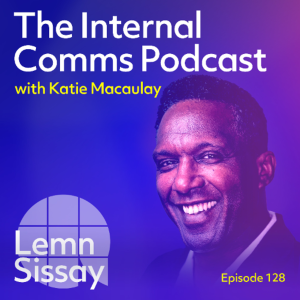
Creativity and belonging with Lemn Sissay (#128)
December 3, 2025
An internal communication profession in an impenetrable bubble is no use to anyone. It helps, from time to time, to reach out, listen, learn – fill yourself up with a story fro...
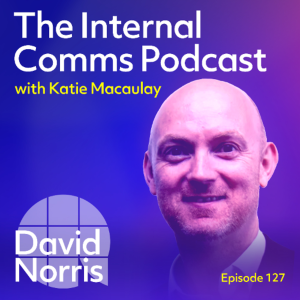
What's really holding you back, with David Norris (#127)
November 19, 2025
‘The qualities that matter most are not technical skills, but inner resources’ is the central thesis of comms coach David Norris’ work. Good news if you don’t want to read ...
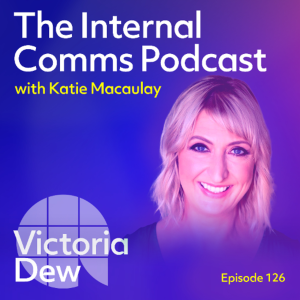
Cracking the frontline code – with Victoria Dew (#126)
November 5, 2025
In this episode, Katie welcomes back the Internal Comms Podcast’s MVP, founder and CEO of Dewpoint Communications Victoria Dew. Back in 2022, Victoria featured on episode 61 of ...

Ryanair’s exercise in efficiency – with James O’Connor (#125)
October 22, 2025
Ryanair flies 200 million passengers to 37 countries in 600 aircraft, a huge operation with a pop-cultural reputation for cheap cheap flights and frank, tongue-in-cheek communicati...
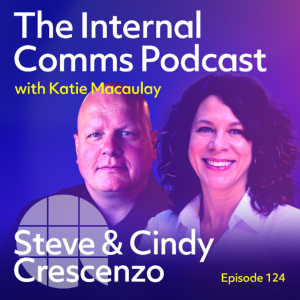
Kicking corporate clichés to the curb with Steve and Cindy Crescenzo (#124)
October 8, 2025
Episode #124 of the Internal Comms Podcast is a joint interview with returning guest Steve Crescenzo and his business partner and wife Cindy. Together, with host Katie Macaulay, th...

Don’t post, participate – with Roger Christie (#123)
September 24, 2025
In this episode, host Katie Macaulay learns how to get social media right. Tough ask? Not when you’ve got Roger Christie on hand to help. For the past 15 years the founder of ...

The science of happiness (and why we get it wrong) – with Professor Catherine Sanderson (#122)
September 10, 2025
Season 14 of the Internal Comms Podcast kicks off with a conversation about happiness. Host Katie Macaulay welcomes Professor Catherine Sanderson to discuss what really makes us...

Episode 121 – The story behind Bupa's elephant
June 25, 2025
In this episode of The Internal Comms Podcast, Katie Macaulay is joined by Jo Hudson, Group Director of Internal Communication at Bupa. Jo has spent the past 16 years at Bupa, one...
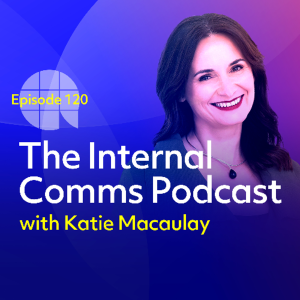
Episode 120 – Walk the line – how to stay in sync
June 11, 2025
In this episode of The Internal Comms Podcast, host Katie Macaulay sits down with alignment strategist and leadership coach Zora Artis to explore a crucial question: how can intern...

Episode 119 – The suite spot – Microsoft minus the mayhem
May 28, 2025
If the platforms you use at work were built by Microsoft, this episode is essential listening. Katie is joined by Alex Graves, Chief Visionary Officer at Silicon Reef — the peop...

Episode 118 – Satirising the spin – a bullsh*t investigation
May 14, 2025
If you have ever found yourself circling back, touching base, breaking down silos or leveraging strategic synergies — then these guests are speaking your language. Charles Firth...
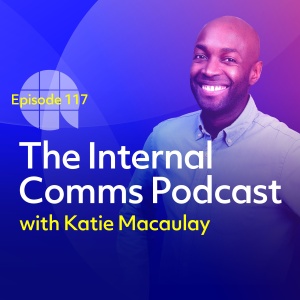
Episode 117 – From humanising a prime minister to empowering the quietest voices
May 12, 2025
What does it take to make one of the most scrutinised leaders in the world feel relatable? And how do we build internal comms that truly include everyone — especially the quieter...
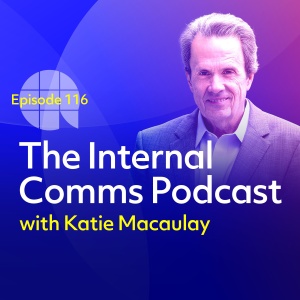
Episode 116 – How to build a remarkable career without a plan
April 7, 2025
Fred Cook’s career proves success doesn’t require a straight line. Now Chairman Emeritus of global PR agency Golin, Fred has spent 35+ years advising world-famous brands – Am...

Episode 115 – Curiosity, creativity & the imposter myth
March 26, 2025
Inspiration is everywhere when you stay curious. That’s the thread running through this episode of The Internal Comms Podcast, where Katie Macaulay welcomes communication, creati...

Episode 114 – The credibility code: Become the leader your team deserves
March 12, 2025
What does it mean to be a credible leader? And just how important is that credibility to your team? In this episode of The Internal Comms Podcast, host Katie Macaulay welcomes back...
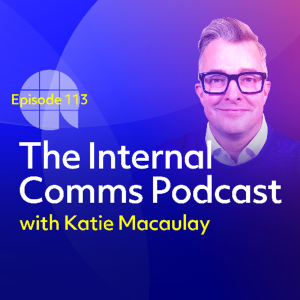
Episode 113 – Soft skill? Think again: The hard truth about storytelling
February 26, 2025
In this episode of The Internal Comms Podcast, host Katie Macaulay welcomes Jeremy Connell-Waite, Global Communications Designer for IBM, an acclaimed speechwriter and storyteller,...
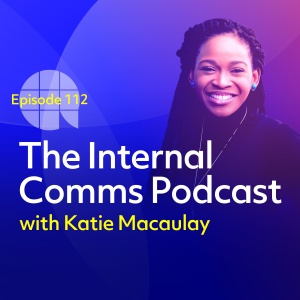
Episode 112 – From intent to impact: take charge of your career
February 20, 2025
We’re back for season 13 of The Internal Comms Podcast and to kick things off, host Katie Macaulay is joined by Eduvie Martin. Eduvie is Group Communications and Engagement Manag...
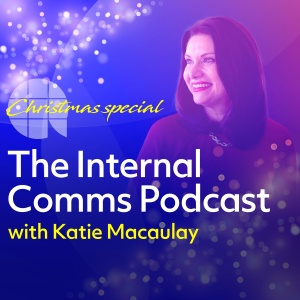
Season 12 – 2024 Christmas Special: nine gifts from the archive
December 18, 2024
In this episode, we mark a big milestone with a gift-wrapped edition of the Internal Comms Podcast. It’s six years since the show launched and, in this Christmas special, host K...
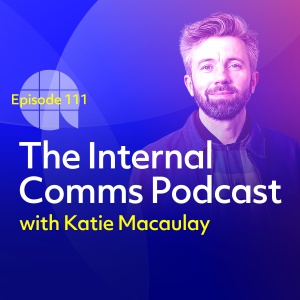
Episode 111 – A creative leader's blueprint for brilliance
December 4, 2024
This week on The Internal Comms Podcast, host Katie Macaulay is joined by a very special guest – AB's creative director, Joel O’Connor. Joel has been with AB for well over a de...
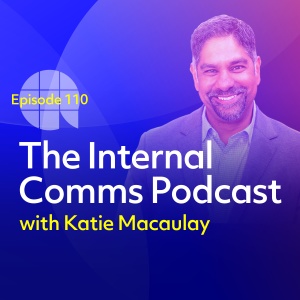
Episode 110 – Navigating the shifting digital landscape
November 20, 2024
This week on The Internal Comms Podcast, host Katie Macaulay is joined by co-founder of Local Wisdom, tech expert and comms leader Pinaki Kathiari. With his rare passion for both t...
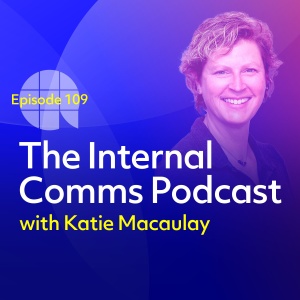
Episode 109 – The business of belonging: A new approach to DEI
November 6, 2024
We all deserve the opportunity to thrive at work. We deserve equal opportunity. We deserve to feel valued and included. That’s what diversity, equity and inclusion (DEI) is all a...
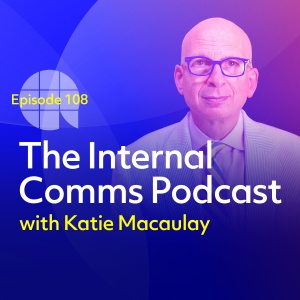
Episode 108 – Seth Godin rewrites the rules of internal communication
October 23, 2024
In this episode, Katie Macaulay is joined by author and influential blogger, Seth Godin. Seth was top of Katie’s guest wish list when The Internal Comms Podcast launched five ye...

Episode 107 – Beyond words: A blueprint for more impactful, immersive IC
October 9, 2024
In this episode of The Internal Comms Podcast, host Katie Macaulay welcomes international internal comms consultant and strategist Monique Zytnik to the hot seat. Monique is the au...
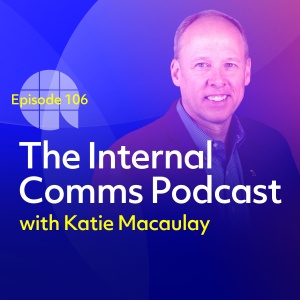
Episode 106 – School of thought: Inside Matt Tidwell’s comms curriculum
September 25, 2024
In this episode of The Internal Comms Podcast, host Katie Macaulay welcomes Matt Tidwell to the hot seat. Matt is a consultant, communicator and educator, and has led comms agencie...

Episode 105 – Reaching the peak of success: IC at Iron Mountain
September 11, 2024
We’re back for Season 12 of The Internal Comms Podcast, and in this first episode, host Katie Macaulay is joined by Senior Director of Corporate Communication at Iron Mountain, N...
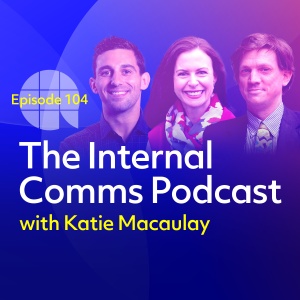
Episode 104 – Communications excellence in times of rapid change
July 31, 2024
McKinsey & Company is one of the world’s most renowned strategic management consultancies. With a mission of striving for “change that changes everything”, its global team of...
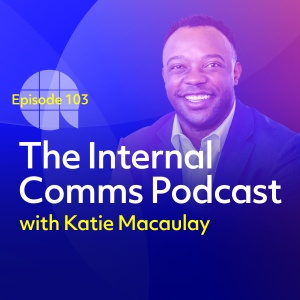
Episode 103 – Say the thing now: Candid conversations at Reddit
July 10, 2024
On a platform where the candid and the curious are king, how do you make sure what’s inside reflects what’s on the outside? Meet Sean Langston, Jr., Head of Internal Communicat...
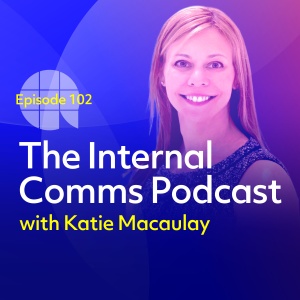
Episode 102 – The sound of success: IC at Spotify, Mastercard and beyond
June 26, 2024
Ever been curious about how some of the biggest brands in the world tackle their internal communication challenges? Well look (or listen) no further. Kerri Warner, this week’s gu...
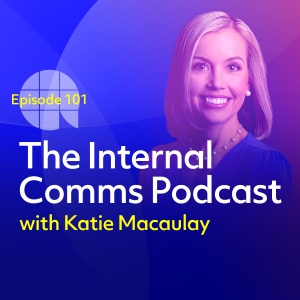
Episode 101 – From complex to clear: Elevate your presentations
June 12, 2024
As internal communicators, empowering leaders to clearly communicate business strategy, important updates and company values is a valued skill. How can we inspire colleagues and le...
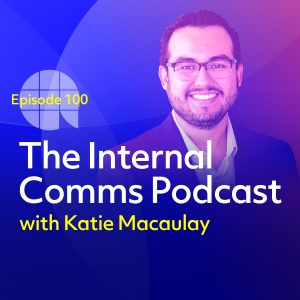
Episode 100 – Meet the super-connector behind #CommsJobs
May 29, 2024
After years running an internal communications team, Daniel Mendez emigrated from Chile to the U.S., where he faced a host of barriers to success. A language barrier. A small or no...
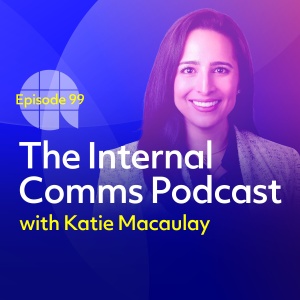
Episode 99 – The communicator’s communicator
May 15, 2024
In this episode of The Internal Comms Podcast, host Katie Macaulay is joined by Linda Zebian. The very first Director of Communications at PR management platform Muck Rack, Linda s...
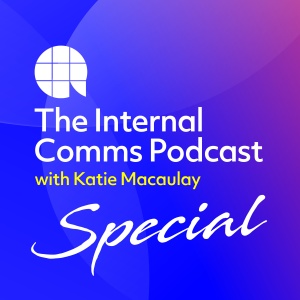
Exclusive reveal: Katie’s IC masterclass
May 1, 2024
Join us for a special episode of The Internal Comms Podcast as host Katie Macaulay announces the imminent launch of her unique on-demand masterclass. With more than three decades ...
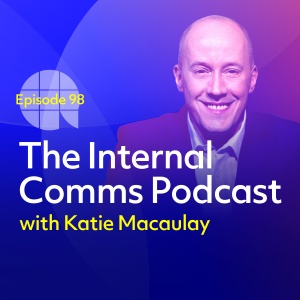
Episode 98 – How to build a powerful personal brand
April 17, 2024
This week on The Internal Comms Podcast, host Katie Macaulay is joined by serial entrepreneur, author, keynote speaker and business mentor Chris Ducker. Chris is a renowned expert ...
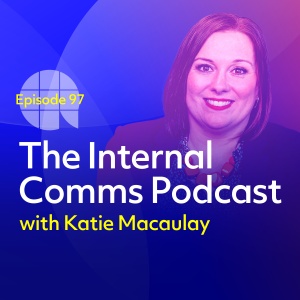
Episode 97 – Leaving the ladder down: helping IC pros step up
April 3, 2024
In this episode of The Internal Comms Podcast, host Katie Macaulay welcomes back the show’s first-ever guest, Rachel Miller. Rachel is an internationally recognised internal com...
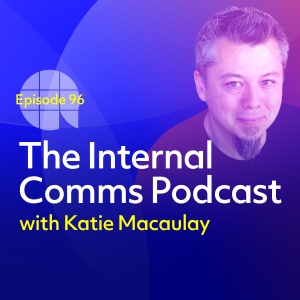
Episode 96 – Inclusion in action: Kindness is the keystone
March 20, 2024
This week on The Internal Comms Podcast, host Katie Macaulay is joined by Global Belonging, Equity and Impact Consultant, and self-styled ‘human-centric technologist’, Bob Wata...
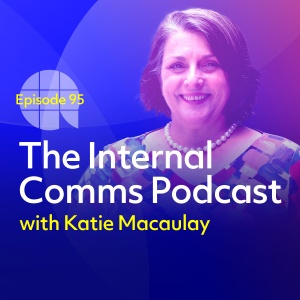
Episode 95 – Mastering your approach to strategic communication
March 6, 2024
This week on The Internal Comms Podcast, host Katie Macaulay is joined by award-winning marketing and communications expert Danielle Bond. Recently retired from corporate life, Da...
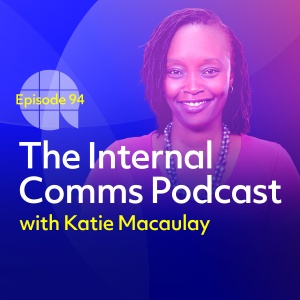
Episode 94 – The stories that shape us
February 21, 2024
In this episode of The Internal Comms Podcast, host Katie Macaulay is joined by leadership communications coach and co-founder of Engage Kenya, Agatha Juma. Agatha credits an emba...

Episode 93 – The sound of success: Why it pays to listen to employees
February 7, 2024
We’re back for Season 11 of The Internal Comms Podcast! And kicking us off with a very special episode, this week host Katie Macaulay is joined by not one, not two, but three gue...
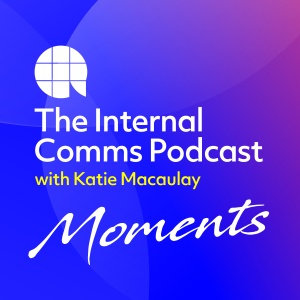
Moment 35 – The four Cs of content: How internal communicators can create comms that land
January 31, 2024
Looking for tips on creating internal communications that land – and stick? In this Moment from The Internal Comms Podcast, Steve Crescenzo shares a few things you absolutely mus...
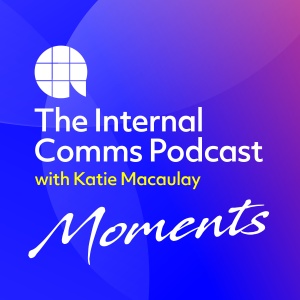
Moment 63 – Are you listening? The power of questions in leadership: Mike Roe
January 24, 2024
“I realised I was probably a pretty crap listener,” Mike Roe tells Katie Macaulay in this Moment from The Internal Comms Podcast. We often go to leaders and start by asking th...

Moment 57 – Language matters: Building two-way engagement at IKEA
January 17, 2024
At IKEA, choosing the right words when communicating with the workforce is everything. Guy Britt, IKEA’s Global Head of Co-worker Comms, tells Katie Macaulay the use of ‘co-wo...
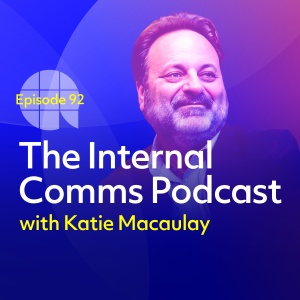
Episode 92 – Revolution coming: How AI is transforming internal comms
December 20, 2023
If you have ever attended one of Shel Holtz’s presentations, you will know that, more often than not, it’s standing room only. Shel has a remarkable ability to anticipate what'...
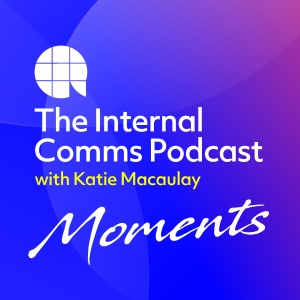
Moment 61 – Human-centric businesses do better: Victoria Dew
December 6, 2023
Does your approach to internal communication have the human touch? It’s essential to the humans you employ, says Victoria Dew, CEO of Dewpoint Communications and an internal com...

Episode 91 – How to build a one-person IC powerhouse
November 22, 2023
Ever feel like, as an internal communicator, you’re fighting an uphill battle all by yourself? This week’s guest on The Internal Comms Podcast has exactly what you need. Host ...
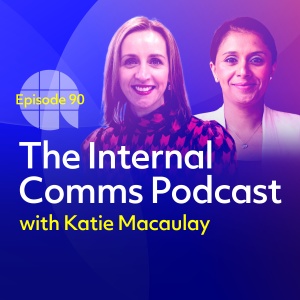
Episode 90 – A shared vision: ED&I and IC in action
November 8, 2023
This week on The Internal Comms Podcast, host Katie Macaulay is joined by Sim Sian, Head of Equality, Diversity and Inclusion at Mitie, and Yvonne O’Hara, formerly Mitie’s Grou...
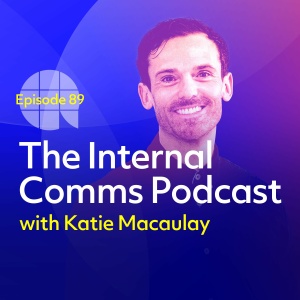
Episode 89 – Netflix-style IC: Snackable, on-demand and authentic
October 25, 2023
In this episode of the Internal Comms Podcast, host Katie Macaulay is joined by Access Group’s Global Head of Communications and Engagement, Paul Downey. Paul caught Katie’s ...
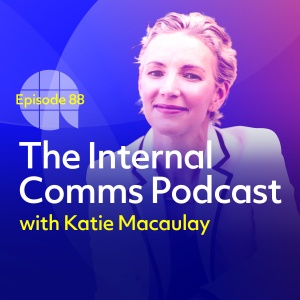
Episode 88 – It’s fixable: How to tackle hard problems
October 11, 2023
In this episode of the Internal Comms Podcast, host Katie Macaulay is joined by Anne Morriss. Anne is an entrepreneur, author, public speaker, and the Executive Founder of the Lea...
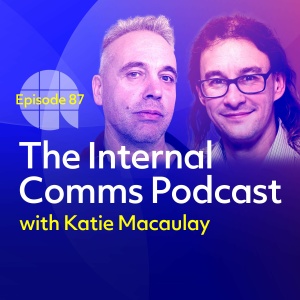
Episode 87 – Tracing the legacy of internal comms
September 27, 2023
It’s often said we must understand the past to build the future, and that sentiment sits at the very heart of this episode. This week on The Internal Comms Podcast we welcome pr...
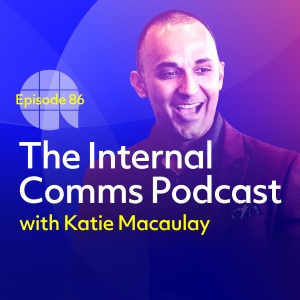
Episode 86 – How to crush your next public speaking gig
September 13, 2023
Season 10 of the Internal Comms Podcast kicks off with one of Katie’s most compelling conversations yet. Shil Shanghavi is a public speaking specialist, storyteller and head of...

Coming soon: Season 10 of The Internal Comms Podcast
September 6, 2023
Our summer break is drawing to a close, Katie has dusted off her mic and we’re ready to launch Season 10 of The Internal Comms Podcast! This season, we’ll be welcoming more o...

Moment 18 – 3% of employees are driving 90% of conversations: Mike Klein
August 30, 2023
In this moment, we catch up with Mike Klein, former political consultant, modern-day communications stalwart, and two-time guest on the Internal Comms Podcast. Mike breaks down h...

Moment 17 – How we create meaning: Sue Dewhurst & Liam FitzPatrick
August 23, 2023
What’s our one true purpose as internal communicators? It’s the question we’re all seeking the answer to. This moment takes us back to when Katie first welcomed Sue Dewhurs...
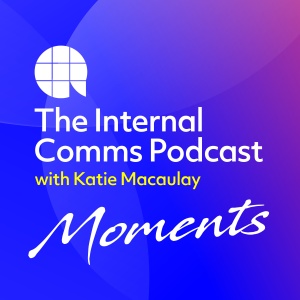
Moment 13 – The message must change at each leadership level: Dr Kevin Ruck
August 16, 2023
If there’s one thing we’re clear about at AB, it’s that communication should not be a one-way street. And that’s what this moment is about. We head back to Episode 13, w...
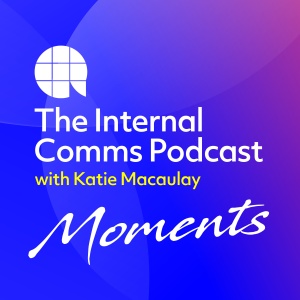
Moment 06 – On tolerance, kindness and being enough: Henry Normal
August 9, 2023
As communicators, we could often do with slowing things down a little. In this moment, Henry Normal – author and co-founder of production company Baby Cow, which he founded with ...

Moment 01 – What happens inside is reflected outside: Rachel Miller
August 2, 2023
Have you heard of an inside-out approach to communication? It’s no secret that today’s internal comms messages seep into the world outside the office walls. After all, anythi...

Episode 85 – Lessons from a trailblazer
July 26, 2023
We’re ending Season 9 of the Internal Comms Podcast with a bang this week, as Sally Susman takes to the hot seat for her second appearance. Sally is Executive Vice President an...
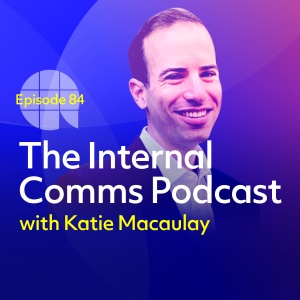
Episode 84 – Ethics in action: Insights from a global compliance leader
July 12, 2023
In modern business, integrity is non-negotiable. As legislation ramps up in lockstep with colleague and customer demands, operating an ethical business in line with global regula...

Episode 83 – ESG: How IC can drive the agenda
June 28, 2023
Define ESG… Well, it stands for environment, social and governance. But can you really define what ESG actually is? Put very simply, ESG is a set of criteria used to evaluate a ...
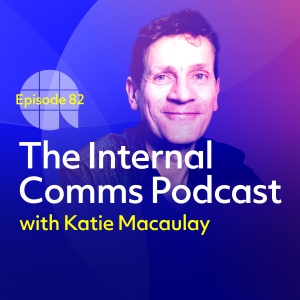
Episode 82 – The truth about resilience
May 31, 2023
It seems everyone’s talking about resilience, the ability to bounce back from misfortune or adversity. But as Bruce Daisley explains to host Katie Macaulay, there’s something w...

Episode 81 – Unilever: Inside a global success story
May 17, 2023
With over 130,000 colleagues, and a 100-year history, Unilever is one of the world’s largest consumer goods companies. And this week on the Internal Comms Podcast, we get a peek ...
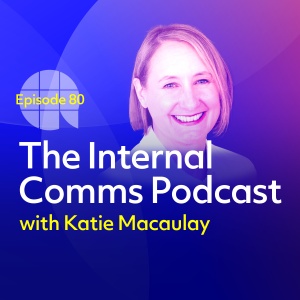
Episode 80 – The inside track on comms at Mercedes F1
May 3, 2023
“The days we fail are the days our competitors live to regret,” said the late, great Niki Lauda. And that’s what this episode of the Internal Comms Podcast is all about. Thi...
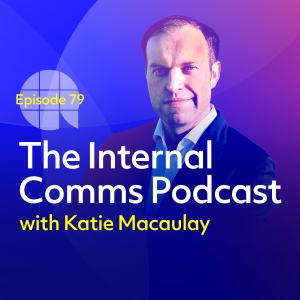
Episode 79 – Lifting the lid on comms consultancy
April 19, 2023
Ever considered what it takes to become an effective communications consultant? Then this week’s episode of The Internal Comms Podcast is for you. Host Katie Macaulay welcomes Si...
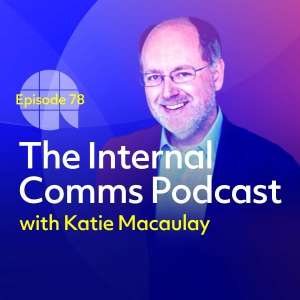
Episode 78 – Comms with courage
April 5, 2023
This week on The Internal Comms Podcast, host Katie Macaulay welcomes Audacity’s Jason Anthoine. Jason has spent three decades working in internal communication, employee experie...
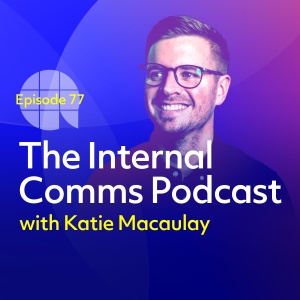
Episode 77 – Here for the culture
March 22, 2023
This week on The Internal Comms Podcast, host Katie Macaulay welcomes culture-chameleon Shane Hatton. Shane is many things – author, international speaker, trainer, leadership co...
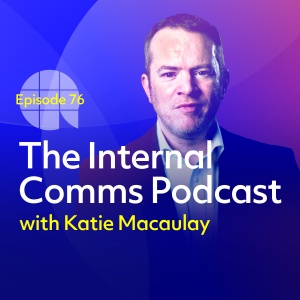
Episode 76 – Employee experience: For the people by the people
March 8, 2023
This week on The Internal Comms Podcast, host Katie Macaulay welcomes Nicholas Wardle. Nicholas is Head of Employee Experience at Brand Experiences, and co-author of ‘Monetising ...
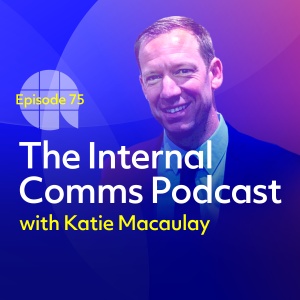
Episode 75 – Inside the world’s most famous corner shop
February 22, 2023
This week on The Internal Comms Podcast, host Katie Macaulay welcomes Sam Bleazard. Sam’s role as Employer Brand Content Producer takes him behind the scenes of ‘the world’s ...

Episode 74 – Culture with sticking power
February 8, 2023
The Internal Comms Podcast is back for Season 9! To kick off this season, we welcomed BizJuicer’s Andy Goram to the hot seat. Andy’s passion for building businesses ‘from t...
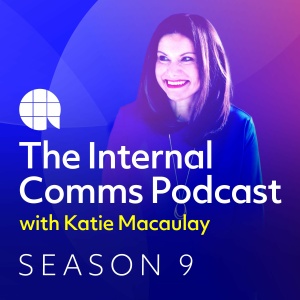
Season 8: In the rear view mirror
February 1, 2023
With Season 9 of The Internal Comms Podcast right around the corner, host Katie Macaulay has taken the opportunity to reflect on the wisdom and insight shared over our latest seaso...

Episode 73 – Forging your own path
December 21, 2022
The season 8 finale features Jennifer Thomas, Head of Communications for the Data & Analytics branch of the London Stock Exchange Group. Born in London to Guyanese parents, Jennif...

Episode 72 – Making your way to the top
December 7, 2022
Episode 72 of The Internal Comms Podcast sees host Katie Macaulay joined by Adrian Cropley, CEO and founder of Cropley Communication and the Centre for Strategic Communication Exce...
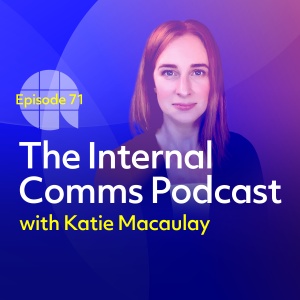
Episode 71 – Effective comms starts with knowing yourself
November 23, 2022
This week’s guest on The Internal Comms Podcast is Joanna Parsons, Head of Internal Communications & Culture at Teamwork. Joanna made Irish history as the first ever Head of Inte...

Episode 70 – Reaching across the aisle
November 9, 2022
Shelby Scarbrough, author of 'Civility Rules! Creating a Purposeful Practice of Civility', shares her deep insight and experience ‘reaching across the aisle’ on episode 70 of T...

Episode 69 – Measuring what matters – actions not feelings
October 26, 2022
Episode 69 of The Internal Comms Podcast sees IC heavyweight Mike Klein return to the hot seat. An internal and social communication consultant based out of Reykjavik, Mike is help...
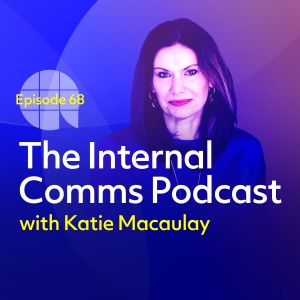
Episode 68 – Host in the hot seat: Reflections on 250,000 plays
October 12, 2022
In this very special episode of The Internal Comms Podcast, the tables have turned. Katie Macaulay is in the hot seat, and AB’s Senior Content Editor Freddie Reynolds takes over ...

Episode 67 – The ABC of research: Ask, believe, change
September 28, 2022
In this episode of The Internal Comms Podcast, host Katie Macaulay invites qualitative research expert Mari Lee to sit in the hot seat. Mari’s specialism is in ‘development com...
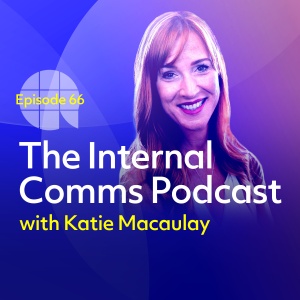
Episode 66 – Combatting IC isolation
September 14, 2022
The Internal Comms Podcast is back for what promises to be an incredible Season 8! In this kick-off episode, host Katie Macaulay welcomes ICology’s Vice President of Community an...
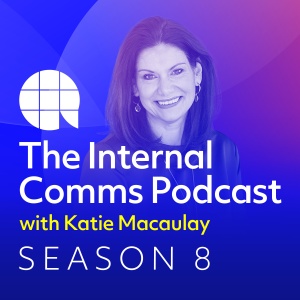
Season 7: The rewind episode
September 7, 2022
The countdown is on, and The Internal Comms Podcast will be returning from its summer break with Season 8 imminently. And while its eighth instalment promises wisdom unbound from a...

Episode 65 – Remote but not unreachable
June 22, 2022
In the final episode of season 7 of The Internal Comms Podcast, host Katie Macaulay speaks with Lily Goodman D’Amato, Delivery Trainer at US-based digital pharmacy Medly. Lily b...
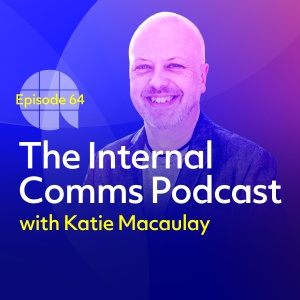
Episode 64 – Releasing your inner sceptic
June 8, 2022
In the latest episode of The Internal Comms Podcast, host Katie Macaulay speaks with Martin Flegg, founder and co-owner of The IC Citizen internal communications consultancy. With...

Episode 63 – Lessons in leadership
May 25, 2022
In episode 63 of The Internal Comms Podcast, host Katie Macaulay meets Mike Roe, who had a 28-year career in the police force and is now CEO of Tensense, a data insights company. ...

Episode 62 – Textbook IC: rewriting comms for a new era
May 11, 2022
In the latest episode of The Internal Comms Podcast, host Katie Macaulay speaks with the duo who wrote the book on internal communications – literally. Sue Dewhurst has worked i...

Episode 61 – Embracing the messiness of being human
April 27, 2022
In this week’s episode of The Internal Comms Podcast, host Katie Macaulay sits down with Victoria Dew, founder and CEO of Dewpoint Communications. Her firm is focused on helping ...

Episode 60 – How to have better conversations
April 13, 2022
In this week’s episode of The Internal Comms Podcast, host Katie Macaulay sits down with Jackie Stavros and Cheri Torres, co-authors of Conversations Worth Having, Using Apprecia...
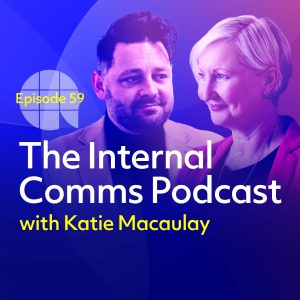
Episode 59 – Strategy & IC: A masterclass in collaboration
March 30, 2022
In this episode of The Internal Comms Podcast, host Katie Macaluay looks into the dynamic between internal comms and strategy – at its best a symbiotic relationship that drives t...
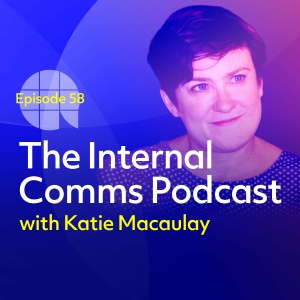
Episode 58 – The state of IC: what’s behind the numbers?
March 16, 2022
In episode 58 of The Internal Comms Podcast, we dissect the results of the latest State of the Sector report, the definitive global survey of the internal communication landscape, ...

Episode 57 – Unboxing internal comms at IKEA
March 2, 2022
In episode 57 of The Internal Comms Podcast, listeners can take a peek inside the world of IC at IKEA, as host Katie Macaulay chats with a dynamic duo from the multinational furnit...
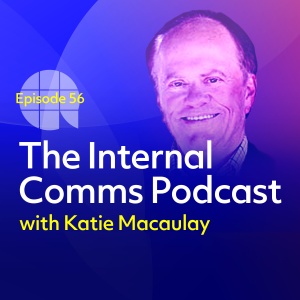
Episode 56 – IC at the sharp end
February 16, 2022
In this first episode of season 7 of The Internal Comms Podcast, host Katie Macaulay talks to Jim Shaffer, an internationally recognised business adviser, leadership coach, author ...
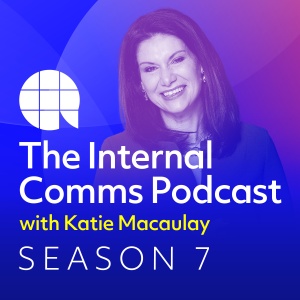
Leading Lights – Highlights From Season 6
February 9, 2022
Get ready to tune in to our next season of The Internal Comms Podcast. While Season 7 promises an amazing array of guests, this special episode highlights some of the best moments ...
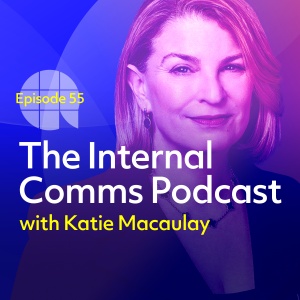
Episode 55 – Mission Possible
December 1, 2021
In the final episode of season 6 of The Internal Comms Podcast, host Katie Macaulay speaks to Sally Susman, Executive Vice President and Chief Corporate Affairs Officer at Pfizer. ...
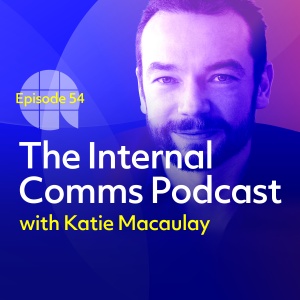
Episode 54 – Brain care: Mastering your mind
November 17, 2021
In the sixth episode of season 6 of The Internal Comms Podcast, host Katie Macaulay talks to Phil Dobson, founder of BrainWorkshops and author of The Brain Book: How to Think and W...

Episode 53 – Suicide Prevention: Reflecting on an award-winning campaign
November 3, 2021
***The content in this episode of The Internal Comms Podcast may be triggering for those who have experience of suicide.*** In the fourth episode of season 6 of The Internal Comms...
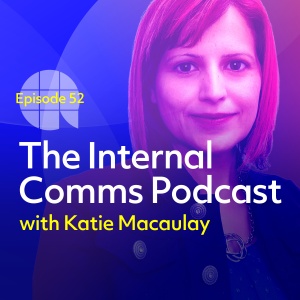
Episode 52 – How do you create comms with purpose?
October 20, 2021
In the fourth episode of season 6 of The Internal Comms Podcast, host Katie Macaulay catches up with Maliha Aqeel, Director of Global Communications and Digital Channels at Fix Net...

Episode 51 – Why are we here? How purpose and values drive healthy cultures
October 6, 2021
In the third episode of season 6 of The Internal Comms Podcast, host Katie Macaulay catches up with communications expert and IABC Fellow Jane Mitchell. Jane began her career with...
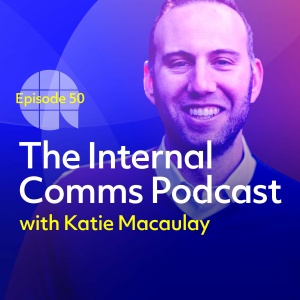
Episode 50 – A guru’s guide to internal podcasts
September 22, 2021
In the second episode of season 6 of The Internal Comms Podcast, host Katie Macaulay talks to Brian Landau, an authority in podcasting and expert on all things audio content creati...

Episode 49 – Engagement: how it started, how it's going
September 8, 2021
In this first episode of season 6 of The Internal Comms Podcast, host Katie Macaulay talks to the father of employee engagement, organisational psychologist Professor William Kahn....
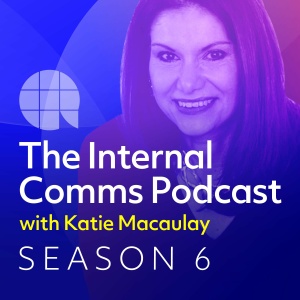
Industry experts – highlights from Season 5
September 1, 2021
The curtain is about to go up on the new season of The Internal Comms Podcast, with some fantastic guests joining host Katie Macaulay to talk about all things communication. For t...

Episode 48 – Changing minds: using behavioural science in IC
May 12, 2021
It has always been Katie Macaulay’s goal for The Internal Comms Podcast to help improve the way organisations communicate with their people, and this week she does so by explorin...
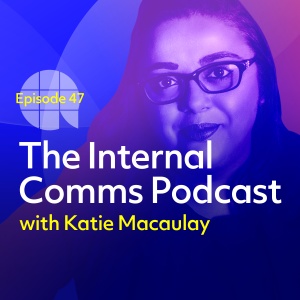
Episode 47 – Conversation with a comms rebel
April 28, 2021
Katie Macaulay’s guest this week is a leading light in efforts to advance the careers of under-represented groups in IC. Advita Patel is a qualified coach, mentor, public speake...
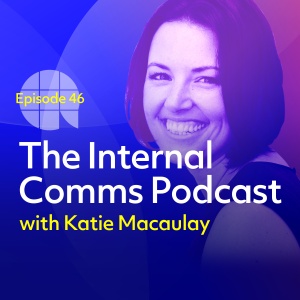
Episode 46 – Influential Internal Communication
April 14, 2021
This episode sees the return of the brilliant business communications strategist, international public speaker and podcast host Jenni Field. The immediate past chair of the Charte...
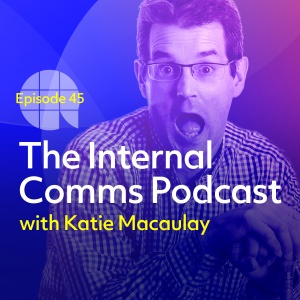
Episode 45 – Sharing the magic
March 31, 2021
The life and career of this week’s guest has been a literal roller coaster. Mark Webb fell into PR and media relations by chance, after spotting a job ad for the new Eurodisney ...
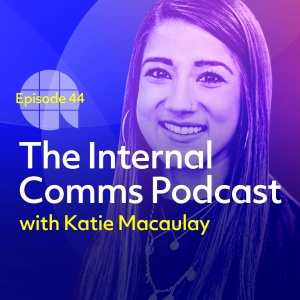
Episode 44 – How to prove your presence
March 17, 2021
Katie Macaulay’s guest for episode 44 of The IC Podcast is Canadian comms expert Prarthna Thakore. After beginning her career in Calgary and then moving to London, Prarthna has ...
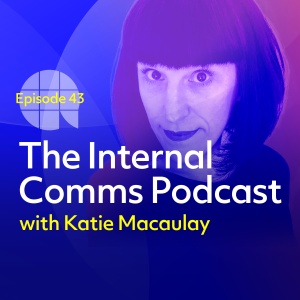
Episode 43 – Kate Jones on the state of our sector
March 3, 2021
Every year since 2008, internal comms pros have responded to the Gallagher State of the Sector report. Because it’s been running for 13 years, and because similar questions are a...
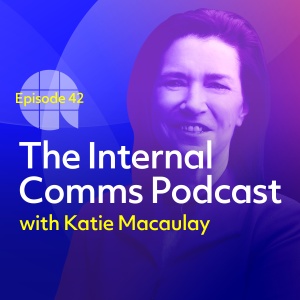
Episode 42 – Once Upon A Time In IC
February 17, 2021
Katie Macaulay kicks off Season 5 of The IC Podcast with a riveting conversation with business storytelling specialist Gabrielle Dolan. Gabrielle is a highly sought-after internat...

Looking back, looking forward: highlights from Season 4
February 10, 2021
With the new season of The Internal Comms Podcast just around the corner, we wanted to whet your appetite with a selection of the best bits from Season 4. For this special best-of...
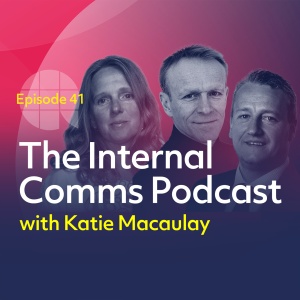
Episode 41 – At the heart of the crisis: NHS comms during Covid-19
December 23, 2020
The NHS has never been far from our hearts and minds over the last few months. As the national jewel in the UK’s crown, the National Health Service has battled many difficulties ...

Episode 40 – Founding fathers – building the first IC agency
December 17, 2020
What prompted the creation of the first IC agency back in 1964 and what convinced those first chief executives that they needed external help communicating with their employees? W...
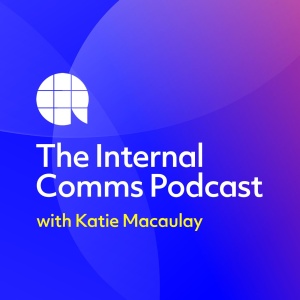
Coming soon in season 4
December 9, 2020
Coming soon in season 4 of The Internal Comms Podcast
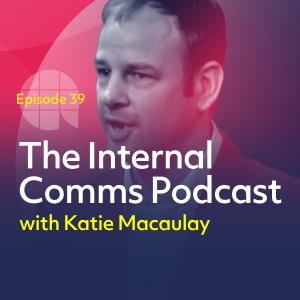
Episode 39 – Evidence-based IC
November 25, 2020
Recent research shows measurement is particularly challenging for many internal comms professionals. Katie’s guest on this episode of The Internal Comms Podcast is Benjamin Ellis...

Episode 38 – The secret thoughts of successful people
November 11, 2020
Amid the turmoil of 2020, with IC pros thrown into the spotlight as we strive to keep colleagues informed and connected, it’s not surprising that many of us are feeling a degree ...

Episode 37 – The art of negotiation
October 28, 2020
If you want to take your communication skills to the next level, then this episode of The Internal Comms Podcast is for you. Katie’s guest is a formidable negotiator and expert ...
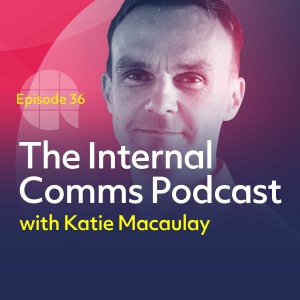
Episode 36 – Navigating the digital landscape
October 14, 2020
In this episode of The Internal Comms Podcast we meet digital expert Frank Wolf. Frank spent seven years as a business consultant at Accenture. Then at T Mobile, he was responsible...

Episode 35 – How to do less, but do it better
September 30, 2020
In this episode of The Internal Comms Podcast we meet Steve Crescenzo, a witty, straight-talking and charismatic speaker, workshop leader and coach from Chicago, USA, who has spent...
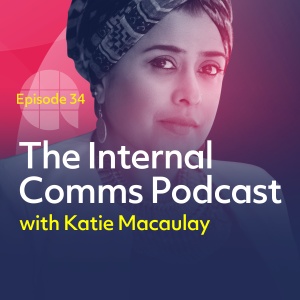
Episode 34 – Cross-cultural comms
September 16, 2020
The Internal Comms Podcast is now in its fourth season – and to kick it off Katie sat down with Tasneem Chopra for some honest and open conversation. The self-styled “professi...
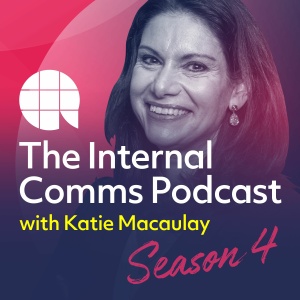
Choice cuts: highlights from Season 3 of The IC Podcast
September 2, 2020
Before the curtain lifts on Season 4 of The IC Podcast, we wanted to leave you with some food for thought from Season 3. And what a season it was; we had a whole host of remarkabl...
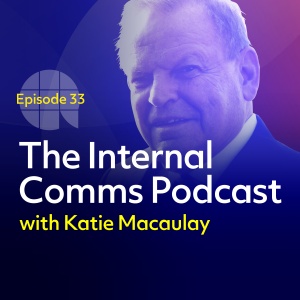
Episode 33 – IC’s founding father
July 8, 2020
The goal of this podcast is to bring you meaningful, in-depth conversations with people who are helping to shape the world of internal communication: practitioners, leaders, author...
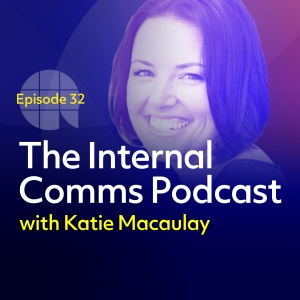
Episode 32 – Leadership in unprecedented times
June 24, 2020
President of the Chartered Institute of Public Relations (CIPR), Jenni Field has more than 16 years’ experience in communications. She is the founder and director of Redefining C...

Episode 31 – What's next? IABC roundtable on the impact of Coronavirus
June 10, 2020
The Internal Comms Podcast has gone truly global with our latest episode featuring three speakers from three countries. In episode 31 Katie tables a roundtable discussion with Jen...

Episode 30 – Your biggest, best, boldest self
May 27, 2020
Chief Executive of the Office for Nuclear Regulation (ONR), Adriènne Kelbie has an exceptional understanding of the true power of communication and engagement. The first woman to ...

Episode 29 – Crisis communication at the coalface
May 13, 2020
Katie’s guest this week is someone who is no stranger to crisis communication. Amanda Coleman was the Director of Corporate Communication at Greater Manchester Police when, on M...
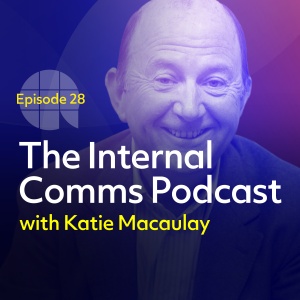
Episode 28 – The Godfather of IC
April 29, 2020
Katie’s guest this week is one of the world’s leading authorities on internal comms and the management of change: Bill Quirke. As managing director of IC consultancy Synopsis,...
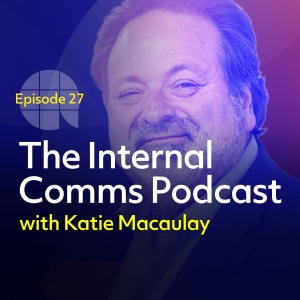
Episode 27 – Stepping up in a Crisis
April 14, 2020
This week Katie speaks to renowned communicator Shel Holtz. As listeners continue to grapple with keeping workforces informed, galvanised and feeling connected during the corona cr...
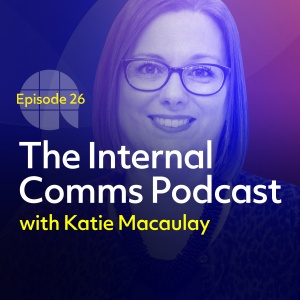
Episode 26 – How to thrive in IC (Part II)
April 1, 2020
This episode is recorded as the majority of the UK is in lockdown while the country attempts to flatten the curve of the COVID-19 pandemic. Katie Macaulay’s guest, Rachel Miller...
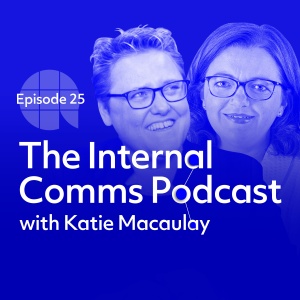
Episode 25 – Crisis Communications: Covid-19 Special
March 25, 2020
Katie Macaulay recorded this special episode on Friday 20 March 2020 in response to the rapidly developing situation surrounding the Covid-19 pandemic. Her guests to talk all thin...
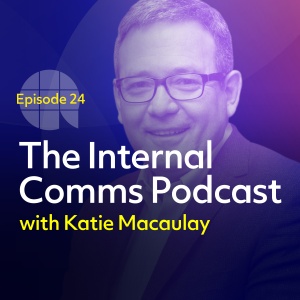
Episode 24 – A view from the top
March 18, 2020
In this episode of The Internal Comms Podcast, Katie puts her first CEO in the hotseat: Marc Barone. Marc is chief executive for continental Europe at AECOM. This Fortune 500 comp...
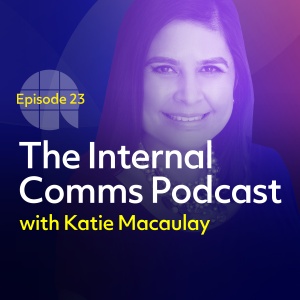
Episode 23 – Courage, confidence and communication
March 4, 2020
In this episode of The Internal Comms Podcast Katie talks to one of world’s most qualified communicators, Priya Bates, from Canada. Priya has an Accredited Business Communicator...
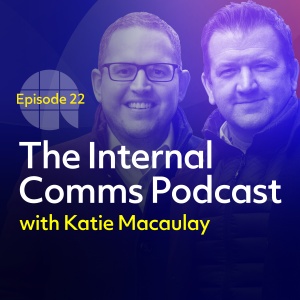
Episode 22 – State of the Sector
February 19, 2020
State of the Sector is the longest-established and most in-depth survey of the internal communication profession, based on responses from more than 1,000 professionals around the w...
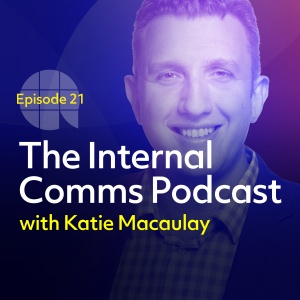
Episode 21 – The cheerleader for IC
February 5, 2020
During Seasons One and Two we covered a lot of ground in IC and beyond. As we begin Season Three, brace yourself for more fascinating insights as we delve into the very heart of co...
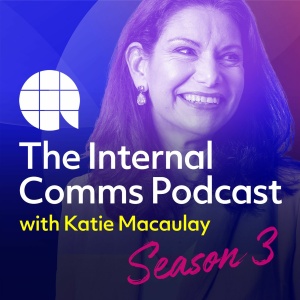
The highlight reel – nuggets of wisdom from Season 1 and 2 of The IC Podcast
January 29, 2020
Since the launch of The Internal Comms Podcast, host Katie Macaulay has interviewed more than 20 fascinating guests from the world of IC and beyond. Now, as we gear up for Season ...
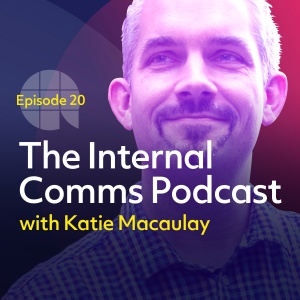
Episode 20 – Advocacy in action
December 18, 2019
Katie’s guest this week is Keith Lewis, UK Social Media and Social Business Manager for Zurich Insurance – one of the world’s largest insurance groups with 55,000 employees i...
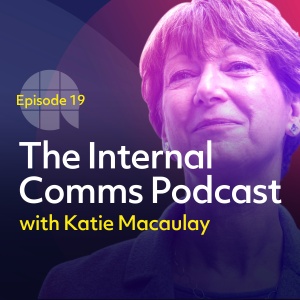
Episode 19 – The appliance of neuroscience
December 4, 2019
Katie Macaulay’s guest this week is a neuroscientist with extensive experience in the field of organisational change. Hilary Scarlett began studying the brain in 2009 after read...

Episode 18 – Editing organisations
November 20, 2019
In this episode we get up close and personal with someone who helps improve the way we communicate at work. Mike Klein worked as a political consultant in the US, but for the past...

Episode 17 – Black Belt Thinking
November 6, 2019
As individuals, this week’s guests have impressive CVs. Sue Dewhurst is an experienced internal communicator who, for many years, has been training and coaching thousands of lea...
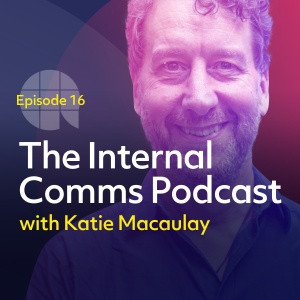
Episode 16 – A Passage to India
October 23, 2019
With this podcast now reaching listeners in 50 countries worldwide, host Katie Macaulay has chosen to go international for this episode. Her guest is creative services entrepreneu...
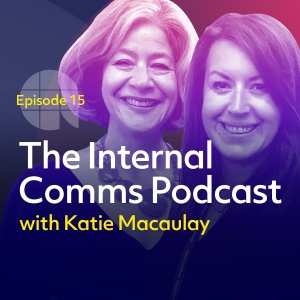
Episode 15 – The Power of Two
October 8, 2019
This week, Katie meets Claire Hyde and Louise Wadman, joint heads of IC at KPMG UK. Possibly the most senior IC job share in the country, Claire and Louise have more than 45 years...
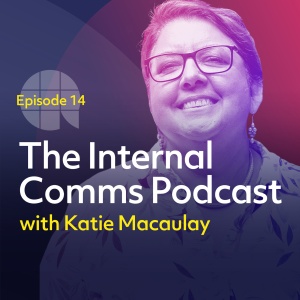
Episode 14 – How to start a movement
September 24, 2019
Katie’s guest this episode is Nita Clarke – whose services to employee engagement have earned her an OBE from the Queen. Nita has a long and fascinating career. She co-authore...

Episode 13 – A check-up with the IC doctor
September 11, 2019
The Internal Comms Podcast is back with a new series of fortnightly conversations with leading lights from the world of internal communications, engagement and leadership. AB Mana...
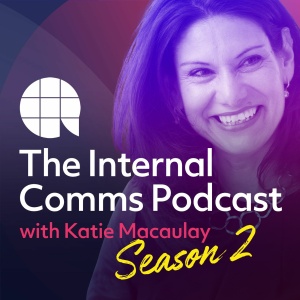
Season 02 Trailer
September 6, 2019
Season two of The Internal Comms Podcast is almost here!
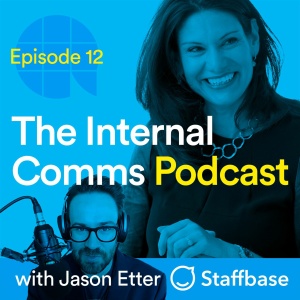
Episode 12 – Listen and learn: insights from 30 years in IC
July 24, 2019
In this extra special bonus episode of The Internal Comms Podcast, the tables are turned on Katie as she takes the spotlight as an interviewee. Posing the searching questions is J...
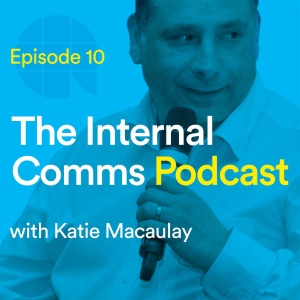
Episode 11 – Putting the soul back into Patisserie Valerie
June 25, 2019
For this special bonus episode of The IC Podcast, Katie interviewed Paolo Peretti, Managing Retail Director of Patisserie Valerie, in front of a live audience at AB Thinks Live, ou...

Episode 10 – Internal comms at the sharp end - recorded at IoIC live
May 21, 2019
For the final episode of season one, Katie Macaulay travels to Bath for IoIC Live and interviews two of the conference’s speakers, Martin Fitzpatrick and Matt Batten. Both Marti...
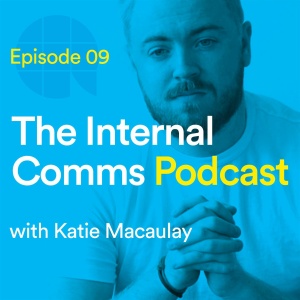
Episode 09 – How to win colleagues and influence people
May 7, 2019
Social influencer marketing is a new and rapidly growing means of getting your message out to your audience. It’s changed the face of advertising and has everyone from up-to-the-...
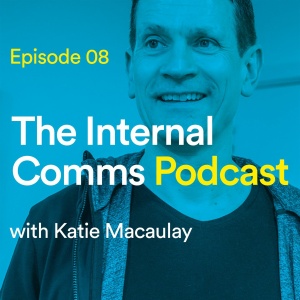
Episode 08 – The Joy of Work
April 23, 2019
Katie’s guest this week is an extremely versatile communicator. In his day job as European Vice President of Twitter, Bruce Daisley has overseen the development of one of the wor...

Episode 07 – What social purpose (really) means
April 9, 2019
Running the UK’s largest retail and financial services network with more branches than all of the UK’s banks and building societies put together, the Post Office is at the hear...

Episode 06 – The craft of communication
March 27, 2019
In episode six, Katie travels beyond the boundaries of internal comms to find out how to write more engagingly, tell better stories and use humour to deliver your message. And who ...

Episode 05 – Learning comms lessons from PR
March 13, 2019
In episode five, Katie aims to find out what internal communications can learn from external communications. So she sits down with ‘mister public relations’, Stephen Waddington...

Episode 04 – What it means to be the voice of IC
February 27, 2019
The Institute of Internal Communication (IoIC) is the voice of the IC profession – dedicated to strengthening confidence, credibility and community. And on 12 March, the IoIC cel...
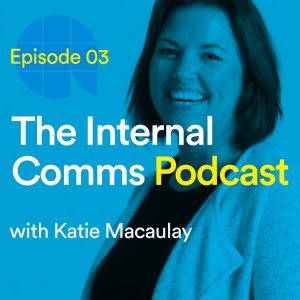
Episode 03 – What the State of the Sector report means for IC
February 13, 2019
Episode three lands as Gatehouse’s latest State of the Sector report is published. Katie invites Jenni Field, a tireless, high-profile personality of the IC landscape, to discus...

Episode 02 – What it takes to be an IC leader
January 30, 2019
Even if you’re only vaguely familiar with internal communications, Katie’s guest in episode two will no doubt be a name you recognise. In a career spanning 30 years, Russell G...
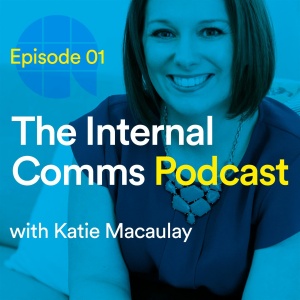
Episode 01 – How to thrive in IC
January 16, 2019
In the first episode of The Internal Comms Podcast, Katie meets Rachel Miller – a prolific blogger, educator, keynote speaker and one of the most respected voices in internal com...
